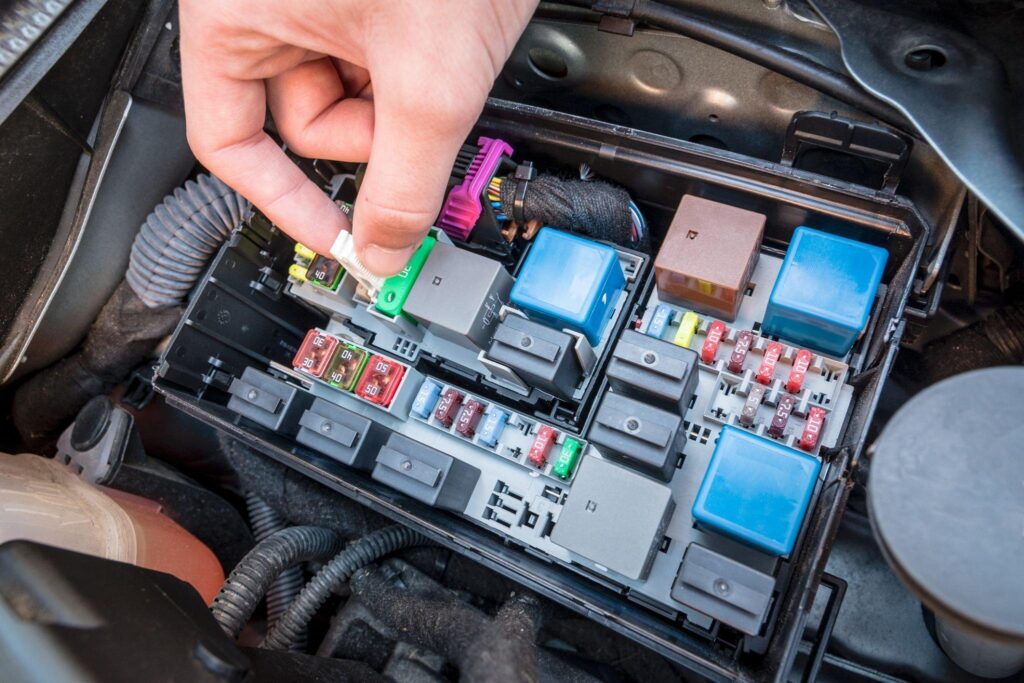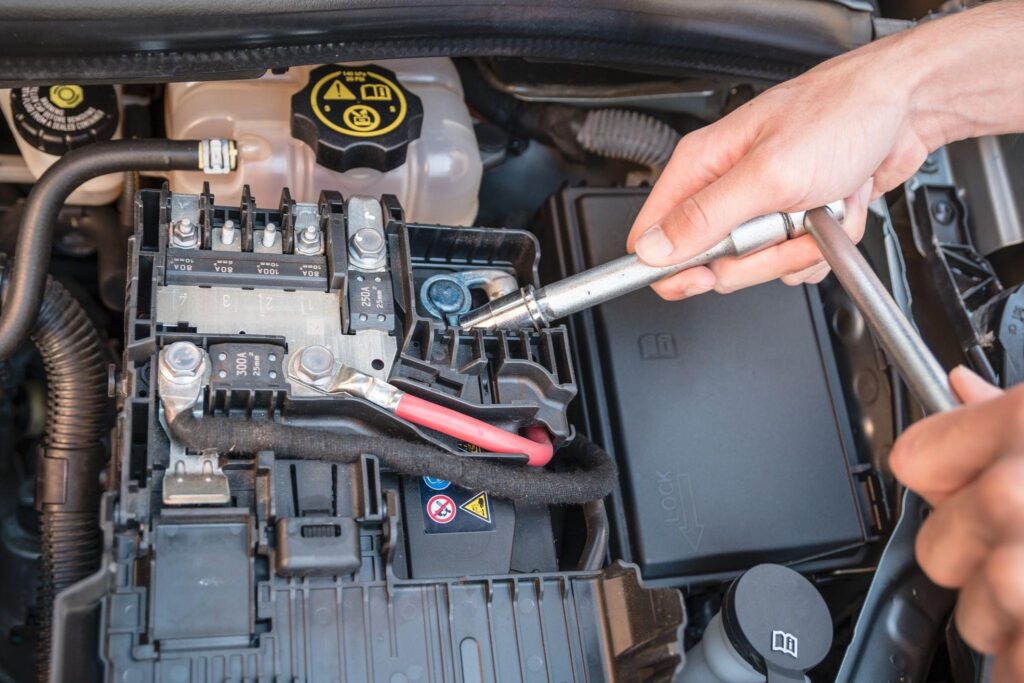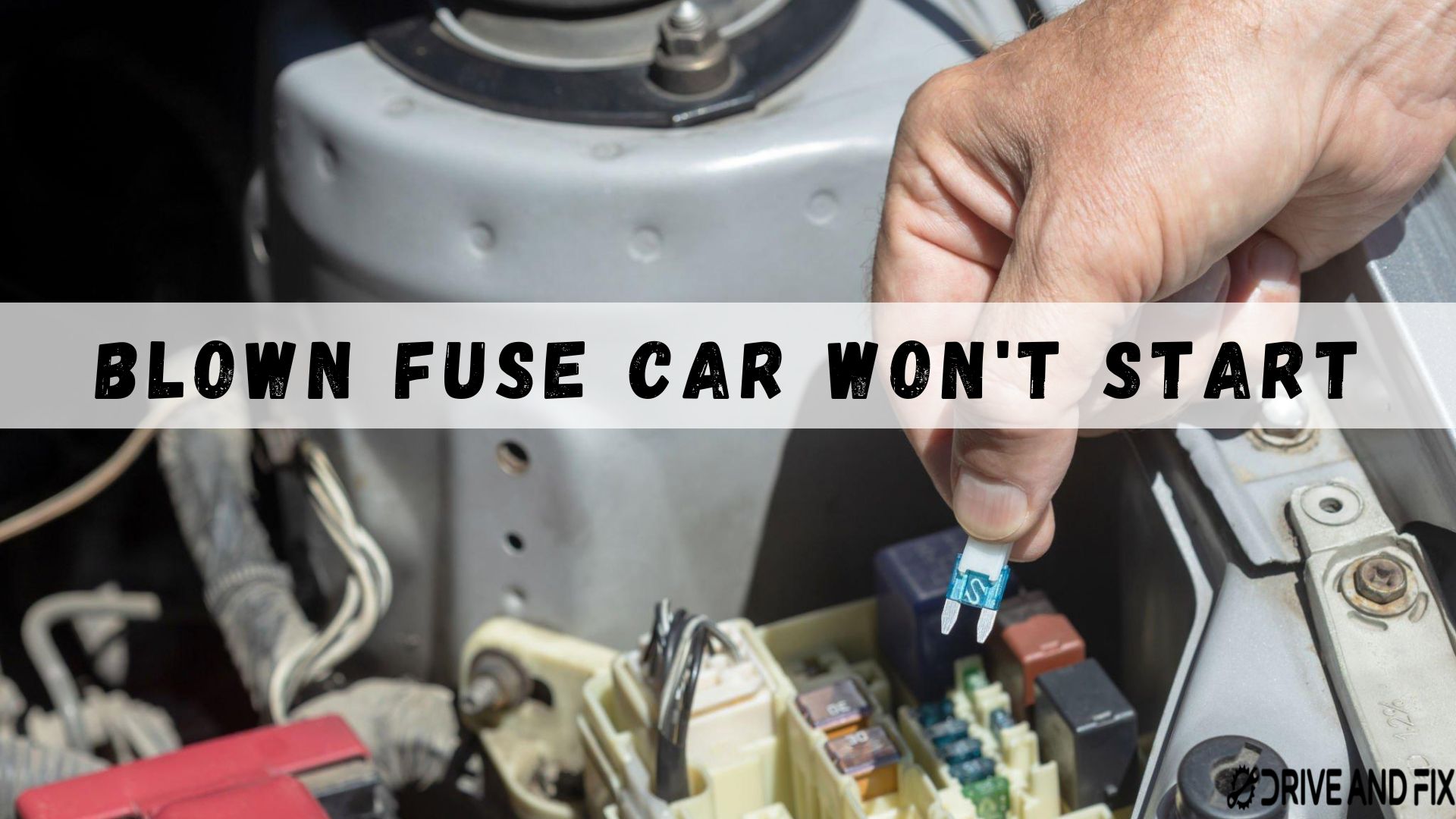A blown fuse in a car is a common issue that can prevent the car from starting. This problem can be caused by a variety of issues, including a blown headlight, a malfunctioning stereo, or even a damaged electrical component.
Blown fuses are a common cause of cars not starting, but the good news is, it’s easy to diagnose and replace them. Here we will explore the signs of it and the steps you can take to fix the issue so you can take your car back on the road. Don’t let it keep you stranded, read on to learn how to fix a blown fuse car won’t start.
What Is A Blown Fuse?
A blown fuse is an electrical safety device that is designed to protect the electrical circuit and its components from damage due to an overload of electrical current. It is a small piece of wire inside a clear plastic or glass enclosure, called a fuse element that melts when an excessive current flows through it, interrupting the flow of electricity in the circuit.
This interrupts the flow of power and prevents damage to the circuit or electrical component. When a fuse “blows” it means the fuse element has melted, indicating that the current flowing through the circuit was too high, and the fuse has done its job by breaking the circuit to prevent damage.
Can A Blown Fuse Prevent A Car From Starting?

Yes, a blown fuse can prevent a car from starting. The fuse is responsible for providing the necessary power to certain electrical components in the vehicle, such as the starter motor or ignition system. If a fuse is blown, it will disrupt the flow of power to these components, preventing the car from starting. Depending on which fuse is blown, it may also cause other symptoms such as lights not working or accessories not functioning properly. It is important to check the fuses if the car doesn’t start and replace any that are blown to get the car running again.
Problems That Can Cause A Fuse To Blow
There are several problems that can cause a fuse to blow, some of the common ones are:
- Overloaded Circuit: When too many electrical devices are connected to the same circuit, the total amount of current flowing through the circuit can exceed the safe limit.
- Short Circuit: When a wire or component in an electrical circuit is damaged or corroded, it can create a direct connection between the positive and negative terminals, causing an excessive amount of current to flow through the circuit and blowing the fuse.
- Electrical Surge: A sudden increase in electrical voltage, such as from a lightning strike or power outage.
- Aging or damaged electrical components: Over time, electrical components in a car can wear out or become damaged.
- Incorrectly sized fuse: Using a fuse with a higher or lower amperage rating than the circuit is designed for can cause it to blow.
It is important to identify the root cause of the blown fuse, fixing it will prevent the fuse to blow again. And if a fuse continues to blow, it is an indication that there is an underlying electrical problem that needs to be addressed by a professional.
Signs Of A Blown Fuse
There are several signs that can indicate a blown fuse, some of the common ones include:
- The electrical component or device that the fuse is protecting is not working. For example, if the headlights are not working, it may be a sign that the headlight fuse has blown.
- A burning smell or smoke coming from the fuse box. This can be an indication that a fuse has overheated and blown.
- The fuse appears visibly damaged, such as a melted or discolored fuse element, or a broken or cracked plastic housing.
- Warning lights or messages on the dashboard, such as a check engine light, can indicate that a specific component or system is not working properly, which can be caused by a blown fuse.
- In some older cars, when you turn the key and the engine does not crank, it may be a sign that the starter fuse has blown.
How to Fix Blown Fuse Car Won’t Start Problem

To fix the problem of a blown fuse car that won’t start, you should follow these steps:
- Locate the fuse box: In most cars, the fuse box is located in the engine compartment, usually near the battery or the hood release. In some vehicles, it may be located in the interior of the car, such as under the dashboard or in the glove box.
- Identify the correct fuse box: Some cars have multiple fuse boxes, so make sure you are looking for the correct one. The owner’s manual or a diagram on the inside of the fuse box cover should indicate which fuses control which components.
- Check the fuses: Carefully inspect each fuse to see if it has blown. A blown fuse will appear visibly damaged, such as a melted or discolored element, or a broken or cracked plastic housing.
- Locate the specific fuse: The fuses are usually labeled with the name of the component or system that they protect, such as “headlights” or “starter motor.” The owner’s manual can help you locate the specific fuse that you need to check or replace.
- Replace the blown fuse: Once you have located it, you can replace it with a new one with the same amperage rating. Simply pull the old fuse out and insert the new one in its place. Make sure the fuse is seated properly and the plastic housing is securely in place.
- Check for additional damage: After replacing the blown fuse, it is important to check for any additional damage that may have caused the fuse to blow. This could include damaged wiring or a malfunctioning electrical component. If you notice any additional damage, it is recommended to seek professional help from a mechanic.
- Prevent future issues: To stop them from happening again, it is important to identify and address the root cause of the problem. Some ways to prevent a blown fuse include: avoiding overloading circuits, checking for and repairing damaged wiring, replacing any malfunctioning electrical components, using the correct amperage of fuses, and avoiding making modifications to the electrical system without consulting a professional.
Signs Of A Bad Starter
Here are the common symptoms of a bad starter:
- Clicking noise when the key is turned
- Engine fails to crank or turn over
- Dash warning lights illuminate
- Burned-out or corroded starter solenoid
- Grinding or whining noise coming from the starter
- Battery drains quickly
- Engine cranks slowly or weakly
- Difficulty turning on the engine, even after multiple attempts
- A burning smell coming from the starter or engine compartment
- Continuously running starter motor.
What Fuse Is The Problem If Your Car Won’t Start?
If your car won’t start and you suspect a fuse may be the problem, it’s best to check the main fuses first. These fuses are typically located in the engine bay, near the battery, or in the cabin of the vehicle. The main fuses are responsible for providing power to the starter motor, alternator, and other critical systems.
If the main fuses appear to be fine, then you can check the fuses related to the ignition system, such as the ignition switch or starter motor fuse.
Keep in mind that a blown fuse is not the only reason that a car is not starting, it’s a possible symptom of a bigger problem. If you can’t find the problem or if the issue persists after replacing a fuse, it’s best to take your car to a mechanic for further diagnosis.
Tips And Tricks To Prevent A Blown Fuse From Happening Again:
Here are some tips and tricks to stop a blown fuse from happening again:
- Avoid overloading circuits: Limit the number of electrical devices that are connected to the same circuit. This will help stop an excessive amount of current from flowing through the circuit.
- Check for and repair damaged wiring: Damaged or corroded wiring can create a short circuit. Regularly inspect the wiring in your car and repair any damage that you find.
- Replace malfunctioning electrical components: Electrical components such as headlight bulbs, alternators, and starter motors can wear out over time. When they malfunction. Be sure to replace any worn-out or malfunctioning components.
- Use the correct amperage rating of fuses: Using fuses with the correct amperage rating is crucial to prevent a blown fuse. Consult the car’s owner’s manual or the inside of the fuse box cover to know the appropriate rating.
- Regularly inspect and clean the fuse box: Dust and debris can accumulate in the fuse box over time. Inspect the fuse box regularly, and clean it if necessary.
- Avoid making modifications to the electrical system without consulting a professional: Making modifications to the electrical system without proper knowledge. Always consult a professional before making any changes to the electrical system of your car.
- Regularly service the car: Regularly servicing the car can help identify any problems that can cause a blown fuse, and fix them before it happens.
FAQs About Blown Fuse Car Won’t Start

What happens when a car’s fuse is blown?
If a car’s fuse is blown, the electrical circuit that it is protecting is broken, preventing electrical current from flowing through that circuit. This can cause one or more electrical systems in the car to stop working.
How to locate the fuse in the fuse box
In most cars, the fuse box is located in the engine compartment, usually near the battery or the hood release. In some cars, it may be located in the interior, such as under the dashboard or in the glove box.
Will a blown fuse drain a battery?
A blown fuse by itself shouldn’t drain a car battery, as it is designed to protect the electrical circuit and its components from damage due to an overload of electrical current by interrupting the flow of electricity in the course. However, suppose a fuse continues to blow. In that case, it is an indication that there is an underlying electrical problem, such as a short circuit or a malfunctioning electrical component, which can cause a drain on the battery.
Why won’t my car start but has power?
If a car has power but won’t start, it can be caused by several issues such as a dead battery, faulty starter, bad ignition switch, problem with the fuel system, air intake system, blown fuse, malfunctioning engine control module, or timing belt/chain problem.
What sensors can cause a car not to start?
Common sensors that can cause this issue include the Camshaft position sensor, crankshaft position sensor, mass airflow sensor, throttle position sensor, and engine coolant temperature sensor.
Final Recommendation
If your car won’t start and you suspect a blown fuse, it’s important to take the time to check the fuse box and replace any blown fuses. Replacing a blown fuse is a relatively simple process, follow the steps and ways mentioned above. it’s important to make sure that you replace it with the right type and size of fuse to ensure your car is safe and in good working order. If your car still won’t start after replacing the fuse, it’s always recommended to consult a mechanic to diagnose the problem.
Hopefully, you have learned a lot about blown fuse cars won’t start problems and know how to solve this issue. Now you may interested to know about “Blown AC Fuse In Car Symptoms”.


